Windows 11 is officially rolled out for the general public and it has quite some features to watch out for. One such feature is its Settings app that is redesigned and enhanced to suit modern users. You can also make changes to some default settings to improve your overall experience of using the new Windows 11 OS. In this guide, we are going to share the Windows 11 Settings that you should check and change straight away – just as we did in Windows 10.
Windows 11 Settings you should check & change right away
You can modify some settings in Windows 11 to enhance your overall experience. Just open the Windows 11 Settings app using Win+I hotkey and then make some changes accordingly. Here are the Windows 11 settings that you should check and change immediately:
- Sign in With a Local Account.
- Turn off Annoying Notifications.
- Disable Advertisements.
- Change your Default Browser.
- Check for Windows Update.
- Pin Favorite Folders to the Start Menu.
- Get Rid of Recommended Items in Start Menu.
- Sync Clipboard Across Devices.
- Turn off Autoplay in Windows 11 Microsoft Store.
- Change Screen Refresh Rate.
- Adjust Power Mode.
- Block Third-party App Installation.
1] Sign in With a Local Account
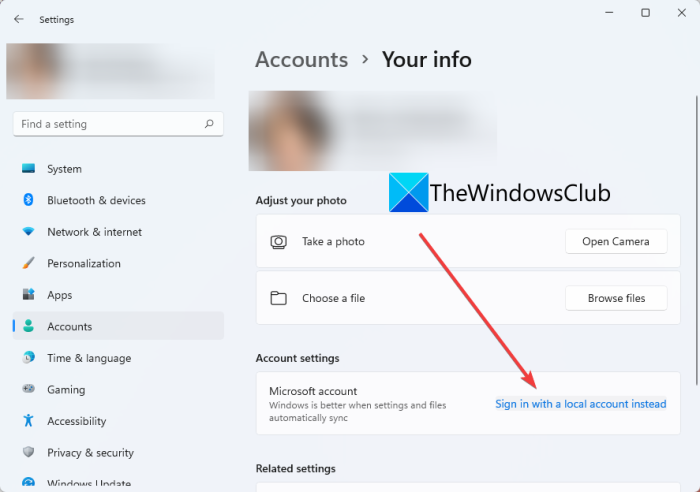
If you like using your local account instead of an online Microsoft account, you can easily switch to your local account. It will basically disable all the background telemetry and tracking services. The process of doing so is similar to Windows 10.
Simply hit the Windows + I hotkey to evoke the Settings app and then go to the Account > Your info section. From here, tap on the Sign in with a local account instead option. Next, you can follow the onscreen instruction to complete the process.
This is a good setting option to check and change for the users who like strict privacy.
2] Turn off Annoying Notifications
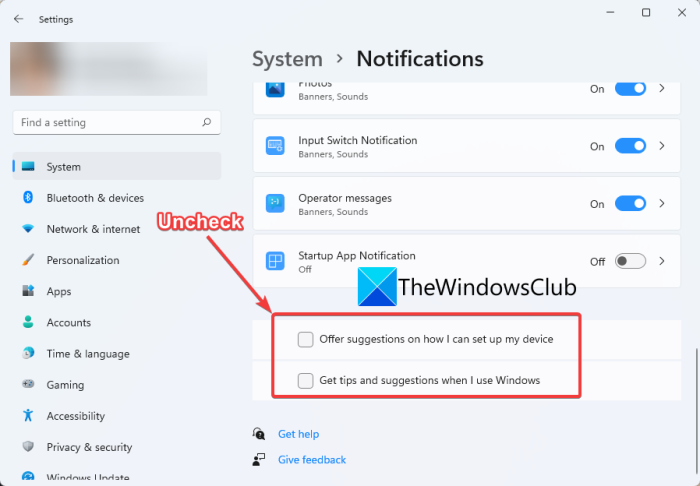
If you want your Windows 11 to look clean and sleek without any annoying notifications that suggest you try out certain products and features, it is best to disable such notifications.
You can easily do that by opening the Settings app and then going to the System > Notifications tab. Inside this tab, you will see various notification settings. Just scroll down towards the end of the page and you will see two checkboxes called “Offer suggestions on how I can set up my device” and “Get tips and suggestions when I use Windows”. You need to uncheck both these checkboxes to disable suggested notifications.
Furthermore, you can also enable or disable notifications from certain apps and senders.
Read: How to customize Windows 11 Quick Settings
3] Disable Advertisements
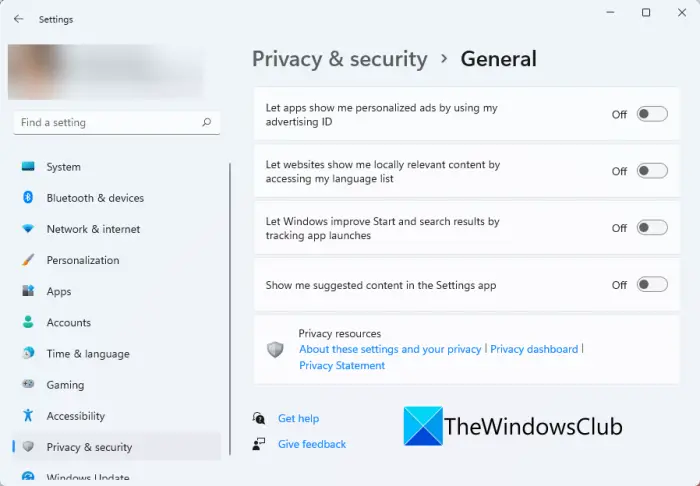
If you are seeing promotions and advertisements popping up every now and then and you are not liking it, you can disable advertisements in Windows 11. These ads can show up in the Start menu, search results, suggested content in the Settings app, etc. So, turn them off and improve and customize your experience as you like.
To disable ads in Windows 11, all you have to do is open the Settings app and then go to the Privacy & security section. Now, under the Windows permissions section, click on the General option.
You will now see some toggles to customize including Let apps show me personalized ads by using my advertising ID, Show me suggested content in the Settings app, Let Windows improve Start and search results by tracking app launches, and more. Simply turn off all these options to disable all kinds of ads in Windows 11.
4] Change your Default Browser
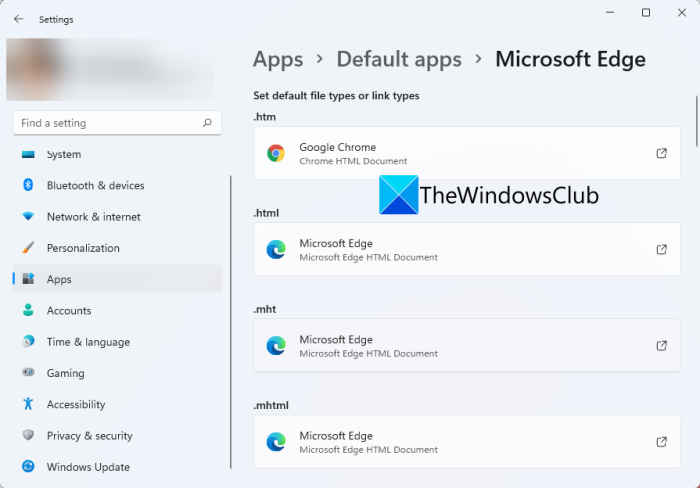
You can change your default browser in Windows 11 to the preferred one. It is set to Microsoft Edge which is all improved and is a great web browser. But, if you like to use Google Chrome, Mozilla Firefox, or some other web browser, you can make some tweaks in the Settings to change the default web browser.
To switch your default web browser, open the Settings app and then go to the Apps > Default apps and scroll down to Microsoft Edge and tap on it. Next, click on all file types one by one and then change their association to the desired web browser from the installed ones. You can check out the full guide to change the default web browser in Windows 11.
5] Check for Windows Update
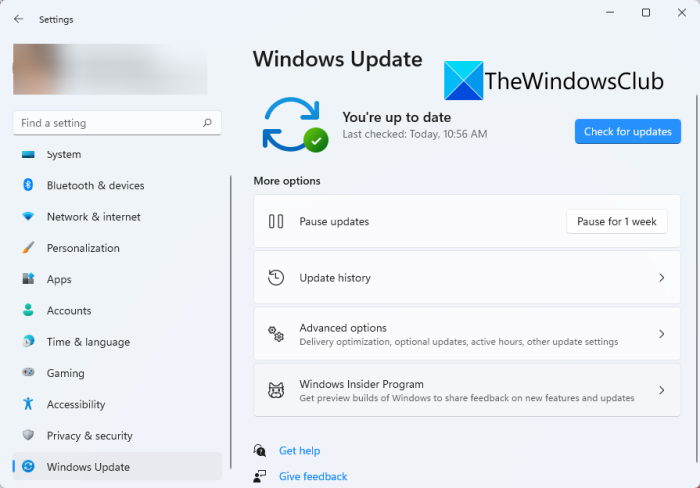
Checking for new Windows updates is important to make sure you have installed all patches and updates including some optional driver and feature updates. You can open the Settings app and navigate to the Windows Update tab. Here, you can check for updates and check out some advanced options like Get me up to date, Optional updates, Active hours, Delivery Optimization, Metered connection and more.
Read: How to update Windows 11 manually.
6] Pin Favorite Folders to the Start Menu
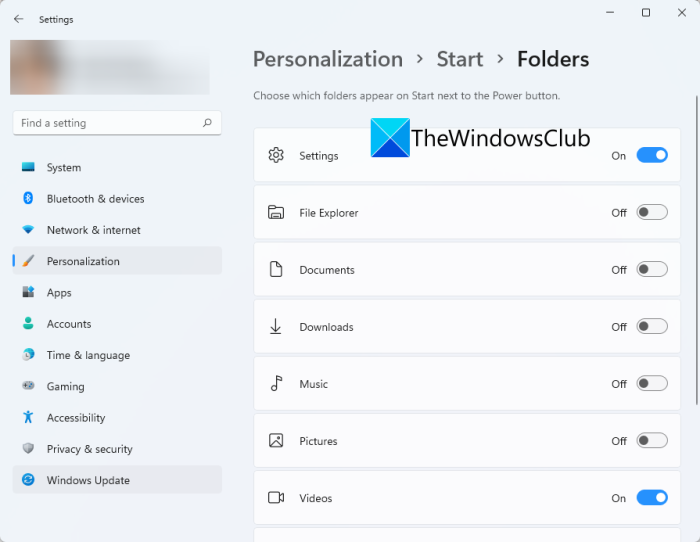
If you want to access some frequently used folders quickest, you can pin them directly to the Start menu. Windows 11 lets you add some predefined folders to the Start menu including Videos, Pictures, Music, Documents, Downloads, Personal folder, and File Explorer. Unfortunately, you can’t add any custom folder to the Start menu as of now.
To pin any of the above-mentioned folders to the Start menu, open Settings and go to the Personalization > Start > Folders. Here, you will see toggles for various folders. Simply turn on the toggle for the folder you want to add to the Start menu. Pinned folders can now be directly accessed from the Start menu present next to the Power button.
See: How to customize the Windows 11 Lock Screen
7] Get Rid of Recommended Items in Start Menu
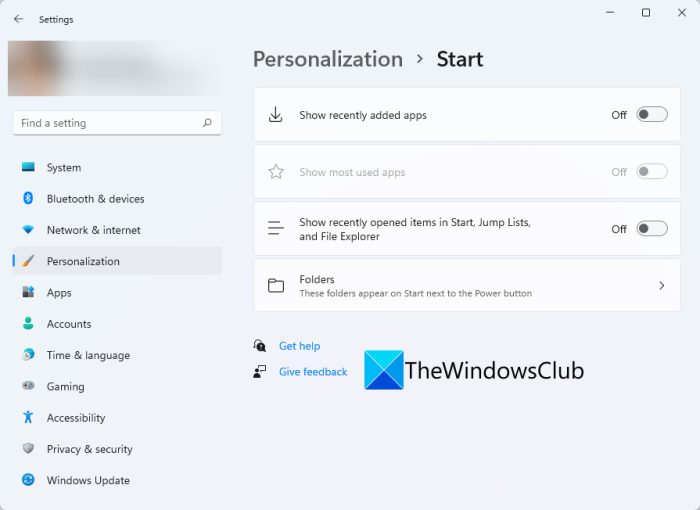
Want to see a clear Start menu without too many items cluttering it? Remove recommended items from the Start menu if you think those are of no use. It can be useful to some as it includes some personalized recommendations. However, you might not require it, and removing this section can improve your experience.
You can remove Recommended section from the Start menu by opening the Settings app and going to the Personalization > Start section. From here, turn off the toggles for the options “Show recently opened items in Start, Jump Lists, and File Explorer” and “Show recently added apps”. You will not see Recommended items in the Start menu. However, a Recommended section will be there in the Start menu and there is no way as of now to completely get rid of it.
Read: How to disable automatic window resizing of adjacent snapped window in Windows 11
8] Sync Clipboard Across Devices
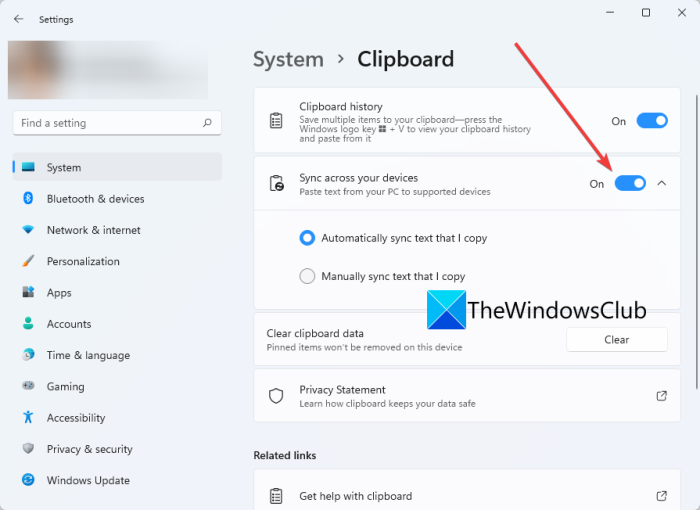
You can share your clipboard history between your PC and smartphone. So, make sure you have enabled the respective settings to use this feature. You can go to the System > Clipboard section in the Windows 11 Settings app. Then, turn on the toggle for the Sync across your devices option. You can now access your clipboard history on other supported devices. To be able to sync the clipboard history on a smartphone, you need to have SwiftKey beta app on your phone.
9] Turn off Autoplay in Windows 11 Microsoft Store
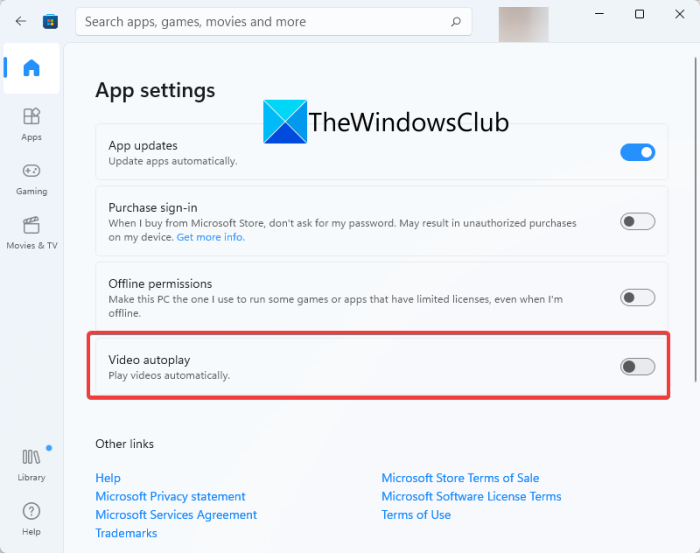
If you don’t like videos being automatically played in your Microsoft Store on Windows 11, turn it off. For that, open Microsoft Store and click on your Profile icon from the top. Then, select the App Settings option and disable the toggle for Video Autoplay. That’s it.
Read: How to use the new Tips app to explore Windows 11
10] Change Screen Refresh Rate

Windows 11 supports high refresh-rate displays and can easily switch from 60Hz to 120Hz. If your monitor supports a higher refresh rate like 120Hz, 144Hz, or 240Hz, you can try changing the screen refresh rate to ensure ultrasmooth content viewing. To do that, open Settings and go to the System > Display > Advanced Display section. From here, you see a Choose a refresh rate option; just select a higher refresh rate for smoother motion.
Read: Things to do AFTER installing or upgrading to Windows 11.
11] Adjust Power Mode
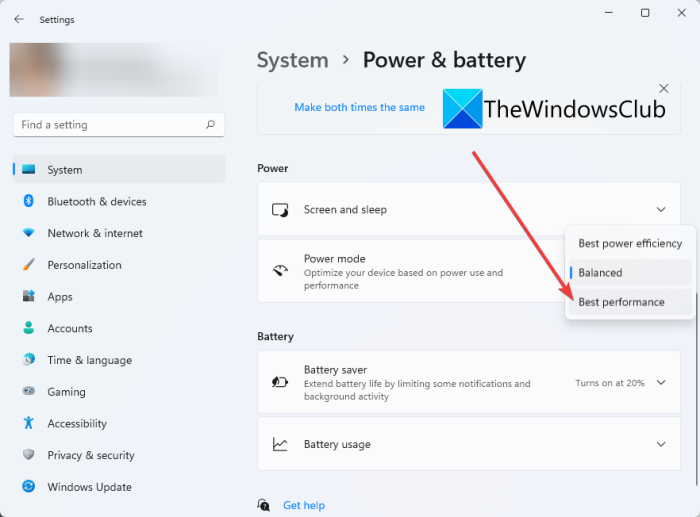
The default power mode in Windows 11 is set to Balanced to save battery life. But, you can change it to get the best performance from your device. So, you can change it to Best Performance by going to Settings > System > Power & battery and selecting the Power Mode drop-down option.
Read: How to use Focus assist Automatic rules in Windows 11
12] Block Third-party App Installation
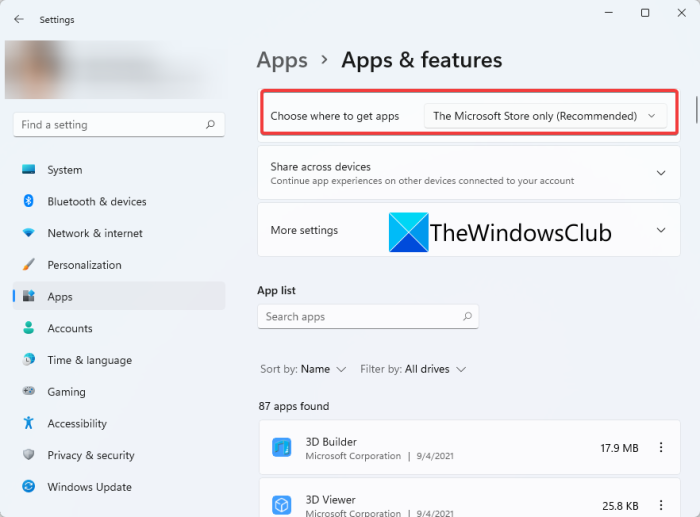
In case you have a teen or an elderly person using the PC, it is recommended to block app installation from a third party. This will ensure that no malicious application is being installed on your system unknowingly and prevent your system from malware and viruses.
Also, with the new and improved Microsoft Store in Windows 11, you can get most of the popular applications directly from the Microsoft Store. Hence, you can allow app installation from Microsoft Store only. For that, go to the Settings and navigate to the Apps > Apps & features section. Now, click on the Choose where to get apps drop-down and then select The Microsoft Store only (Recommended) option. The next best option we suggest is the Warn me before installing setting.
What are the new features in Windows 11?
The new features in Windows 11 include Redesigned Start, Taskbar, UI, Snap Layout, Snap Groups, and more. If you own a Business or Enterprise edition, there are some new Productivity and Collaboration features, Security Features, and many more features that can look forward to.
That’s it! Hope this helps!
Now read: Windows 11 Known issues and problems.